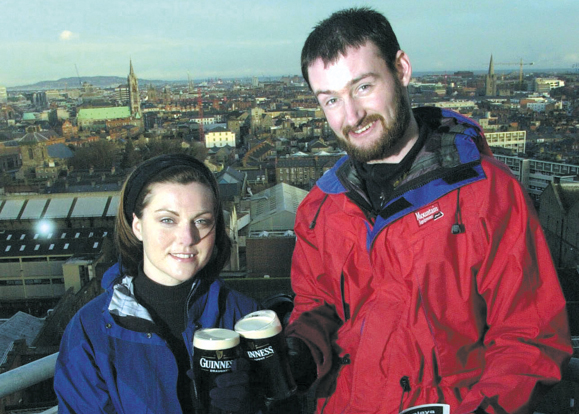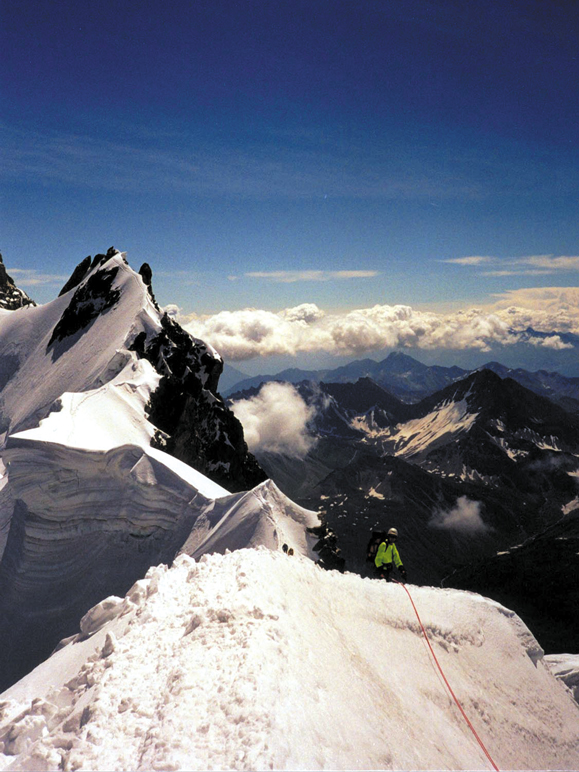In his working hours he’s an anaesthetist at Belfast City Hospital but come springtime Roger McMorrow’s concerns will focus elsewhere. The 26-year-old will peg his white coat for a month and start assessing how quickly the snow is melting in the Himalayas.
In early May, Roger will set off with three mountaineers and make for the remote Garwahl region of northern India. The team plans to scale a mountain that has never been climbed before. Should they succeed they will be in a position to christen the mountain and so talk has already begun of an `Irish peak’ at the roof of the world.
For now though the details are pretty sketchy, to say the least. Discussing the project in Dublin, Roger produces a photocopied map of the Garwahl. Somewhere in the muddle of concentric hand-drawn squiggles is pk6044. To the initiated, this means the mountain peak stands at 6,044 meters above sea level. Sight unseen, it has become the group’s obsession, not simply because it’s there but because there’s no record of anyone ever climbing it.
“I have been to the Himalayas before,” explains Roger, who has ten years’ climbing experience. “I remember taking a plane over them and looking out the window. There was nothing but a sea of mountains below. It looked so vast but it did surprise me to learn there are thousands of unclimbed peaks in the world.”
Pk6044 is one of them.
Of the team he has assembled, two of the climbers — chemical engineer Michael McCann (23) and Spanish physicist Gustau Catalan (27) — previously toured with Roger and the mountaineering club at Belfast’s Queens University. The fourth member, Sara Spencer from Waterford, took up climbing seriously just two years ago. “I think it is addictive,” Sara says, having twice gone Alpine climbing with the Irish Mountaineering Council (IMC) and last November making the Kilimanjaro ascent with Roger.
“I find it very life-affirming,” she enthuses. “It’s something that makes you aware of yourself and your surroundings for a long period of time. It focuses your mind. The worst circumstances can bring out the best in people, and on a climb you develop more lasting friendships than you might over a few pints at the end of the week. Apart from everything else it’s a more interesting way to see a country, interacting with the people and the environment there and achieving a goal you’ve set for yourself.”
The Himalayan range has become something of a goldmine for government coffers in India, Nepal and Tibet. A permit from the Indian government to climb pk6044 will cost the team $3,500 with an additional $400 environmental levy. Financial support to date has come from the Mount Everest Foundation, the Irish Himalayan Trust, IMC and the Northern Ireland Sports Council as well as cereal provisions from Kelkin Foods.
Coincidentally, the United Nations declared 2002 International Year of the Mountain. It sounds like something dreamt up to fill space, but the theme is formal recognition, however meaningless, that 10 percent of the world’s population live in mountains. In keeping with the UN’s enthusiasm for people in high places, the IMC has encouraged mountaineering clubs here to mark the occasion. Which makes the assault on pk 6044 neat and timely.
To prepare for conditions they might encounter in the Garwahl the team went to Scotland in December to climb Ben Nevis (which rises 1343m above sea level). In a six-day climb, temperatures dropped to minus seven degrees, leaving little room for Christmas cheer. Aware of potential dangers on uncertain ground, the team moved only in daylight. By 8 p.m. on New Year’s Eve all four were inside the tent, bedded down in wintry darkness. A hard day’s climbing had taken its toll and the biggest struggle after dinner was to stay awake till midnight. With the help of a shortwave radio they rang in 2002.
Their Himalayan expedition will be a major test. Temperatures may plummet to 20 degrees below, and even if the snow is firm after the monsoon season, avalanches remain a constant threat. The term masochism comes to mind, but one assumes danger is part of the attraction.

They have no idea what pk6044 actually looks like, they’re not sure what conditions to expect or even if it will be possible to climb at all. Roger expects to establish base camp at about 5,200 feet above sea level. Even this is too high for helicopters. In the event of serious accident, rescue by airlift will not be possible, a fact which raises both the risk and merit of their project.
Effectively the team will be on its own, testing their skills and preparation, calling on the judgement of the expedition leader but ultimately depending on each other. When you weigh up all considerations you can only conclude that pk6044 presents this group with a challenge they simply cannot resist.
Their aim is to retrieve pk6044 from the anonymous canon of unknown and unnamed mountain tops. In a cautionary moment, however, the expedition leader points out everything that goes up, even adventure climbers, must come down. “The summit is a nice cherry,” he nods, “but I always say, when you reach the summit you’re halfway there.”
He is quick to separate the thrill of adventure from recklessness in the pursuit. It’s a sober reminder that three experienced climbers died last year in Ireland in separate tragedies on MacGillycuddy’s Reeks in Co. Kerry. Climbers profess “a healthy respect” for mountains the way fishermen speak of the sea. “If there is a crucial decision to make I will make it — even to abort the climb,” insists Roger with the air of a safety instructor. “If that happens I certainly wouldn’t consider it a wasted trip or a failed trip.”
“There is an inherent danger in the sport, but you can minimize that danger at every point,” agrees Sara. “I would not lose a finger for any mountain. I have a reasonable skill level, and if that will take me to the top I will go to the top. I’d expect to be pushed along the way but I fully intend to come back without any broken bones.”
They will have two and a half weeks to reach the peak. Depending on what they find on the slopes above, the four-member group may divide in two at base camp and make the ascent from different routes. It’s known as the Alpine style, moving quickly with small, light packs. “Speed almost equals safety in the mountains,” maintains the expedition leader. “If we do split into two groups I don’t think either group would have a problem in the other reaching the summit first. It’s not a race.”
If they succeed they will experience the strange sensation of being the first human beings to set foot on the peak. Just as importantly, they must then follow a set of procedures to record the event. The American Alpine Journal catalogues new ascents every year, and the climbing party will submit a name for the peak as well as any significant features they come across. Rather than tempt fate, the group has not yet decided on a name.
“When I see high mountains they seem to call out and I want to climb them,” says Sara. “It seems to engage me in a way I wasn’t engaged before.”
Roger, who will use the expedition to carry out research on altitude sickness, is driven by the same bug. “I feel more alive on the mountain than I do anywhere else,” he explains. “I enjoy my job at the hospital. It’s partly vocational, but I spend my days dreaming of faraway mountains.” ♦


Leave a Reply